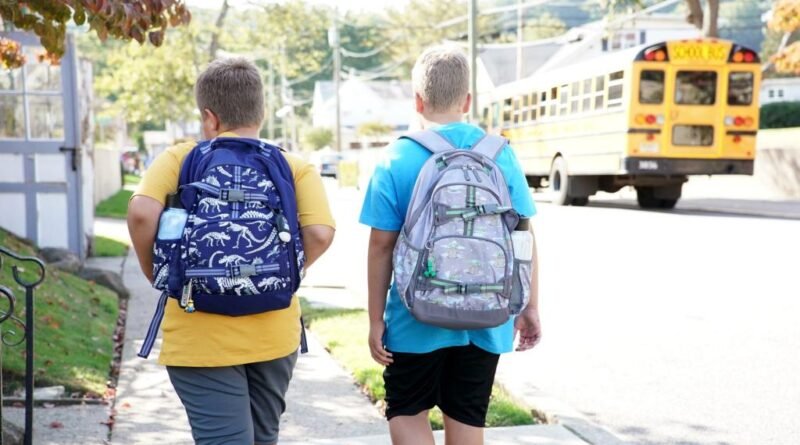The NYC transit system undermines one’s right of ‘passage’

Even in the boom years, raising kids in New York City wasn’t easy: Apartments are tiny, neighbors hate noise and sidewalks are too narrow for strollers.
But today, as disorder has taken over the subways, parents face another logistical headache: How should my growing kid get around town, whether on the transit system, on foot or in a car, without putting herself in danger?
Over two generations, kids in the suburbs have lost their freedom to move autonomously: Young teens who once would’ve walked or biked to school take the school bus or are driven by their parents.
That’s not good: Kids can’t develop well if they can’t take some risks, and make some judgments outside of adult supervision.
In the city, though, kids still enjoy a measure of autonomy, largely because of our transit system.
Out of 1.3 million elementary-age through high-school students, only 150,000 take a yellow bus.
Yes, some private schools arrange their own transportation, and some parents (or nannies) drive their kids.
But the rest — hundreds of thousands — either take a subway or bus, using a city-issued free MetroCard, or walk.
It’s thus not uncommon in New York City, from Jackson Heights to the Upper West Side to Jamaica, to see what is an increasingly rare site in car-dependent suburbs: teens and even pre-teen kids riding the train, in small groups or alone, with no parent helicoptering nearby.
Kids naturally grow into their independence, by taking more freedom as a school year progresses.
Now, though, as kids have fully resumed their routines post-COVID, parents have a new fear, one not experienced in a generation: transit disorder and crime.
Felony violence on the subways remains 61% higher than in 2019 — and kids aren’t safe from attack just because they’re kids.
Lives at risk
With more kids carrying weapons into the transit system, parents must fear that teenage disputes will turn deadly: In 2022, 15-year-old Jayjon Burnett was fatally shot during an after-school fight on a Queens A train.
Last fall, a 13-year-old lost his life when a teen assailant stabbed him on an MTA bus.
Then, there are the mishaps: At least four teens have died “subway surfing” within a year.
No, city government can’t prevent all stupidity — but more aggressive interaction on the part of police toward teens can prevent some of this idiocy.
Despite their student MetroCards, many students just walk through the exit gate — stopping them as they do and checking them for knives and guns may disrupt some violence.
Even police just asking kids if they’re planning on taking videos of themselves subway surfing, and showing them the video aftermath of one such incident, may deter even one on-the-fence kid from acting recklessly to impress his friends.
Parents also must worry that their kids will fall victim to adult criminality or derangement.
My colleague tells a harrowing story: Her son, Goran, 18, just finished high school and now works on the Lower East Side at an ice-cream parlor.
Waiting for the L train home to Williamsburg, Brooklyn, on Feb. 21 around 10:30 p.m., he was randomly assaulted on the First Avenue platform.
This assault never made it into the police stats, as many don’t, as Goran didn’t file a report.
But for a parent who spent 18 years raising a child safely, to have one of his first adult nighttime transit experiences turn violent is unsettling.
Another colleague sends her 16-year-old daughter to high school from Queens to Manhattan on the express bus, a 90-minute trip.
But her daughter can’t avoid the subway altogether.
“She dreads it,” my colleague notes.
On one short ride, an assailant threw liquid on her and her classmates.
As the girl’s younger sister applies to high schools, she and her mom are limiting their choices to schools that she can reach without a subway ride.
Recently, Curbed ran a piece about the new phenomenon of “tweens and adolescents [who] are experiencing subway-related anxiety, often to the point of refusing to ride and sometimes requiring therapy.”
The most bizarre thing about the Curbed piece is parents who seem to think their kids are the problem, not the underlying insane behavior on the subway that their kids want to avoid: having to constantly navigate around passed-out drug users, near-naked men, sexual harassers and other “disturbing encounters,” such as an unhinged person screaming racial slurs.
Hmm: Why didn’t this pathology of “subway anxiety” among tweens and teens exist five years ago?
Have the kids gone insane — or have the adults, many of whom accept as normal what the preteens and teens rightly view as unacceptable?
Nicole Gelinas is a contributing editor to the Manhattan Institute’s City Journal.




